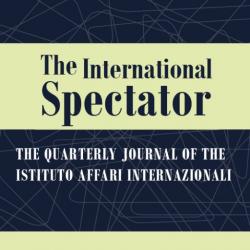Alignment Cooperation and Regional Security Architecture in the Indo-Pacific

Although the US-led system of formal alliances remains the main pillar of the regional security architecture in Asia, alignment cooperation – centred on the Indo-Pacific maritime conceptualisation of the region – has been on the rise. This includes informal bilateral and minilateral agreements for security collaboration between regional and extra-regional US treaty allies or close security partners, notably Japan, Australia, India, the United Kingdom and France. While the various alignments complement and address the deficiencies of the formal US-led alliances, the functional and informal characteristics of alignments allow countries to pursue security cooperation both in conjunction with the United States and independently of it. This leads to a more fluid security architecture that increasingly reflects the diversity of emerging regional ‘architects’, among which Japan is assuming a leading role, as much as the region’s array of new security challenges.
Keywords: alliance, alignment, Indo-Pacific, Japan, security architecture
-
Details
The International Spectator, Vol. 55, No. 1, March 2020, p. 18-33 -
Issue
55/1 -
ISBN/ISSN/DOI:
10.1080/03932729.2020.1712132


